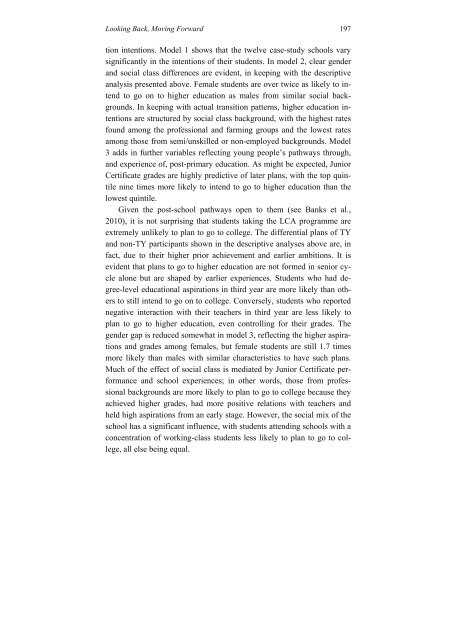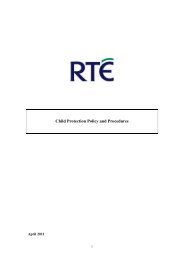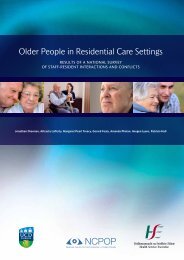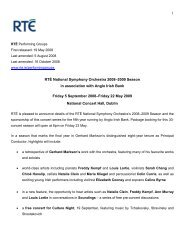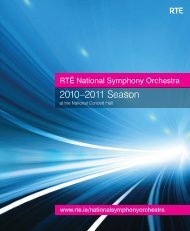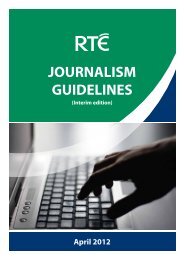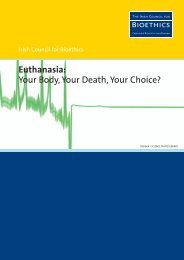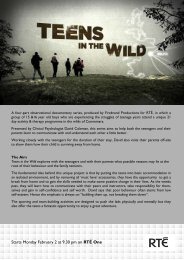From Leaving CertiFiCate to Leaving SChooL a Longitudinal Study ...
From Leaving CertiFiCate to Leaving SChooL a Longitudinal Study ...
From Leaving CertiFiCate to Leaving SChooL a Longitudinal Study ...
Create successful ePaper yourself
Turn your PDF publications into a flip-book with our unique Google optimized e-Paper software.
Looking Back, Moving Forward 197<br />
tion intentions. Model 1 shows that the twelve case-study schools vary<br />
significantly in the intentions of their students. In model 2, clear gender<br />
and social class differences are evident, in keeping with the descriptive<br />
analysis presented above. Female students are over twice as likely <strong>to</strong> intend<br />
<strong>to</strong> go on <strong>to</strong> higher education as males from similar social backgrounds.<br />
In keeping with actual transition patterns, higher education intentions<br />
are structured by social class background, with the highest rates<br />
found among the professional and farming groups and the lowest rates<br />
among those from semi/unskilled or non-employed backgrounds. Model<br />
3 adds in further variables reflecting young people’s pathways through,<br />
and experience of, post-primary education. As might be expected, Junior<br />
Certificate grades are highly predictive of later plans, with the <strong>to</strong>p quintile<br />
nine times more likely <strong>to</strong> intend <strong>to</strong> go <strong>to</strong> higher education than the<br />
lowest quintile.<br />
Given the post-school pathways open <strong>to</strong> them (see Banks et al.,<br />
2010), it is not surprising that students taking the LCA programme are<br />
extremely unlikely <strong>to</strong> plan <strong>to</strong> go <strong>to</strong> college. The differential plans of TY<br />
and non-TY participants shown in the descriptive analyses above are, in<br />
fact, due <strong>to</strong> their higher prior achievement and earlier ambitions. It is<br />
evident that plans <strong>to</strong> go <strong>to</strong> higher education are not formed in senior cycle<br />
alone but are shaped by earlier experiences. Students who had degree-level<br />
educational aspirations in third year are more likely than others<br />
<strong>to</strong> still intend <strong>to</strong> go on <strong>to</strong> college. Conversely, students who reported<br />
negative interaction with their teachers in third year are less likely <strong>to</strong><br />
plan <strong>to</strong> go <strong>to</strong> higher education, even controlling for their grades. The<br />
gender gap is reduced somewhat in model 3, reflecting the higher aspirations<br />
and grades among females, but female students are still 1.7 times<br />
more likely than males with similar characteristics <strong>to</strong> have such plans.<br />
Much of the effect of social class is mediated by Junior Certificate performance<br />
and school experiences; in other words, those from professional<br />
backgrounds are more likely <strong>to</strong> plan <strong>to</strong> go <strong>to</strong> college because they<br />
achieved higher grades, had more positive relations with teachers and<br />
held high aspirations from an early stage. However, the social mix of the<br />
school has a significant influence, with students attending schools with a<br />
concentration of working-class students less likely <strong>to</strong> plan <strong>to</strong> go <strong>to</strong> college,<br />
all else being equal.


